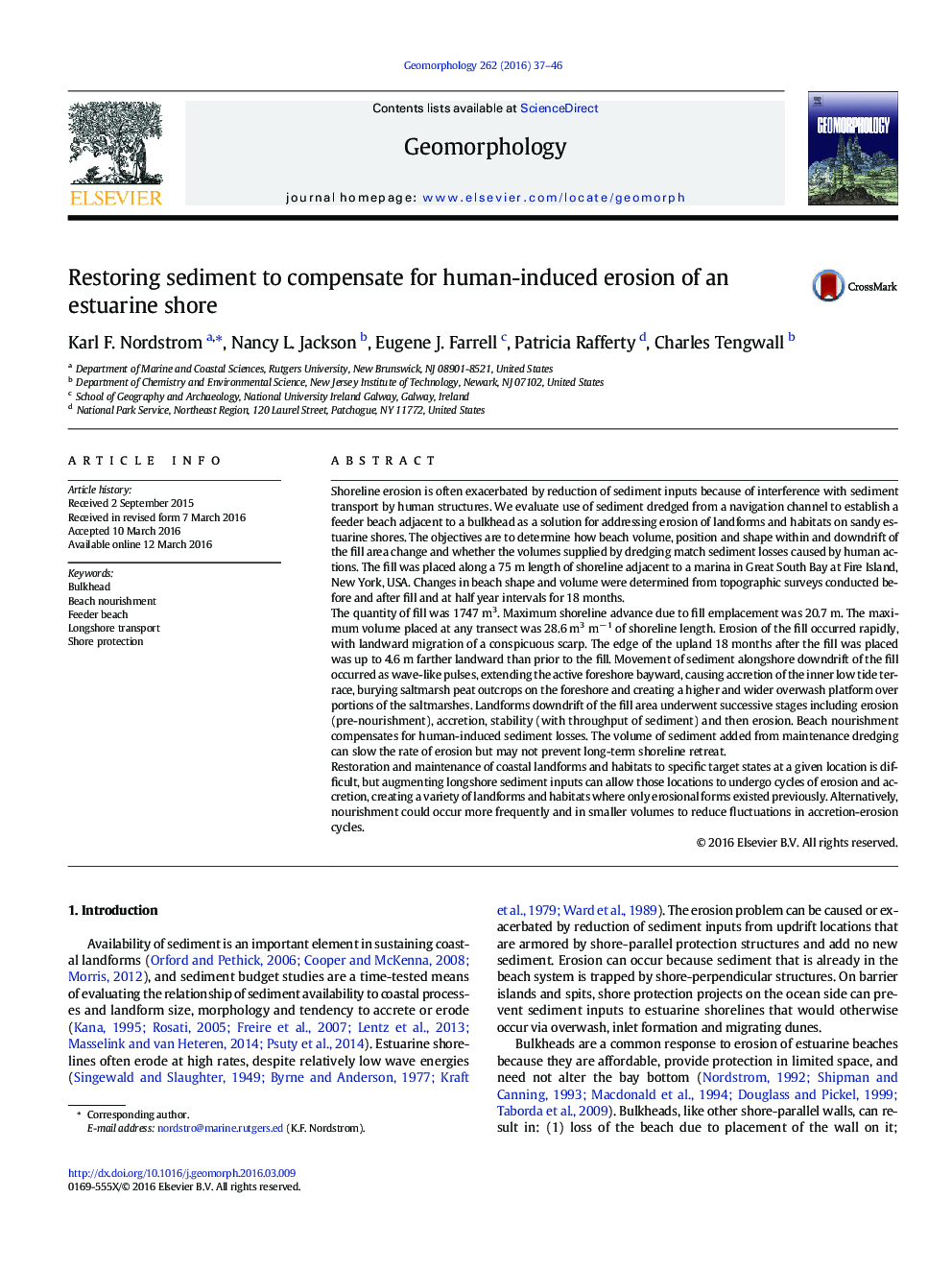| کد مقاله | کد نشریه | سال انتشار | مقاله انگلیسی | نسخه تمام متن |
|---|---|---|---|---|
| 4683991 | 1635387 | 2016 | 10 صفحه PDF | دانلود رایگان |
• Human actions can reduce sediment inputs to an estuarine shore, causing erosion.
• Maintenance dredging provides a source of compatible sediment for a feeder beach.
• Fill moved rapidly out of a nourished area to restore beaches downdrift.
• Relatively low estuarine wave heights can cause substantial topographic change.
• Restoring sediment budgets rather than landforms can be an effective solution.
Shoreline erosion is often exacerbated by reduction of sediment inputs because of interference with sediment transport by human structures. We evaluate use of sediment dredged from a navigation channel to establish a feeder beach adjacent to a bulkhead as a solution for addressing erosion of landforms and habitats on sandy estuarine shores. The objectives are to determine how beach volume, position and shape within and downdrift of the fill area change and whether the volumes supplied by dredging match sediment losses caused by human actions. The fill was placed along a 75 m length of shoreline adjacent to a marina in Great South Bay at Fire Island, New York, USA. Changes in beach shape and volume were determined from topographic surveys conducted before and after fill and at half year intervals for 18 months.The quantity of fill was 1747 m3. Maximum shoreline advance due to fill emplacement was 20.7 m. The maximum volume placed at any transect was 28.6 m3 m− 1 of shoreline length. Erosion of the fill occurred rapidly, with landward migration of a conspicuous scarp. The edge of the upland 18 months after the fill was placed was up to 4.6 m farther landward than prior to the fill. Movement of sediment alongshore downdrift of the fill occurred as wave-like pulses, extending the active foreshore bayward, causing accretion of the inner low tide terrace, burying saltmarsh peat outcrops on the foreshore and creating a higher and wider overwash platform over portions of the saltmarshes. Landforms downdrift of the fill area underwent successive stages including erosion (pre-nourishment), accretion, stability (with throughput of sediment) and then erosion. Beach nourishment compensates for human-induced sediment losses. The volume of sediment added from maintenance dredging can slow the rate of erosion but may not prevent long-term shoreline retreat.Restoration and maintenance of coastal landforms and habitats to specific target states at a given location is difficult, but augmenting longshore sediment inputs can allow those locations to undergo cycles of erosion and accretion, creating a variety of landforms and habitats where only erosional forms existed previously. Alternatively, nourishment could occur more frequently and in smaller volumes to reduce fluctuations in accretion-erosion cycles.
Journal: Geomorphology - Volume 262, 1 June 2016, Pages 37–46
